What Is Rule Of 75 For Retirement?
Key Takeaway:
- The rule of 75 is a retirement planning strategy that allows individuals to retire earlier without penalty or reduce their retirement benefits by taking into account their age and years of service. It provides increased flexibility in retirement planning and can be a beneficial option for those looking to retire earlier or transition to part-time work.
- Calculating the rule of 75 involves adding an individual’s age and years of service. If the sum is 75 or greater, they may be eligible for the rule of 75. It is important to consult with a financial advisor or HR representative to ensure eligibility and understand the potential impact on retirement benefits.
- While the rule of 75 offers advantages such as increased flexibility and early retirement options, it may also have potential disadvantages such as reduced retirement benefits and limited availability. It is important to weigh the pros and cons and determine if the rule of 75 is the right option for you based on your individual circumstances and retirement goals.
Are you planning for a secure retirement? Rule of 75 can help you achieve the retirement life you desire. It’s an approach to financial planning that can reduce the stress and risks associated with planning for retirement. You can use the rule of 75 to start planning and ensure a comfortable retirement.
Rule of 75 for Retirement: Definition and Basics
The Rule of 75 for Retirement is a guideline used to determine when one can retire without penalty. Simply put, when an individual’s age and total years of employment add up to 75, they can retire without incurring any penalties. The rule’s purpose is to ensure that individuals receive the maximum pension benefits for their investment into their retirement fund.
However, this rule may vary depending on the employers or government. Therefore, it is best to consult with an expert before making any decisions about retirement.
It is important to note that the Rule of 75 for Retirement is not a one-size-fits-all approach, as there are various factors that need to be considered, such as the type of pension plan and the age of the individual when starting the plan. Additionally, there are different variations of this rule, such as the rule of 80 or 85, used by employers or government schemes.
For instance, the origin of the Rule of 75 for Retirement came from the Oklahoma Teachers’ Retirement System in 1978, where it defined the combination of age and years of service to be equal to 75, as the earliest requirement to retire without penalty. Since then, the Rule of 75 has been adopted by various organizations as a benchmark for retirement.
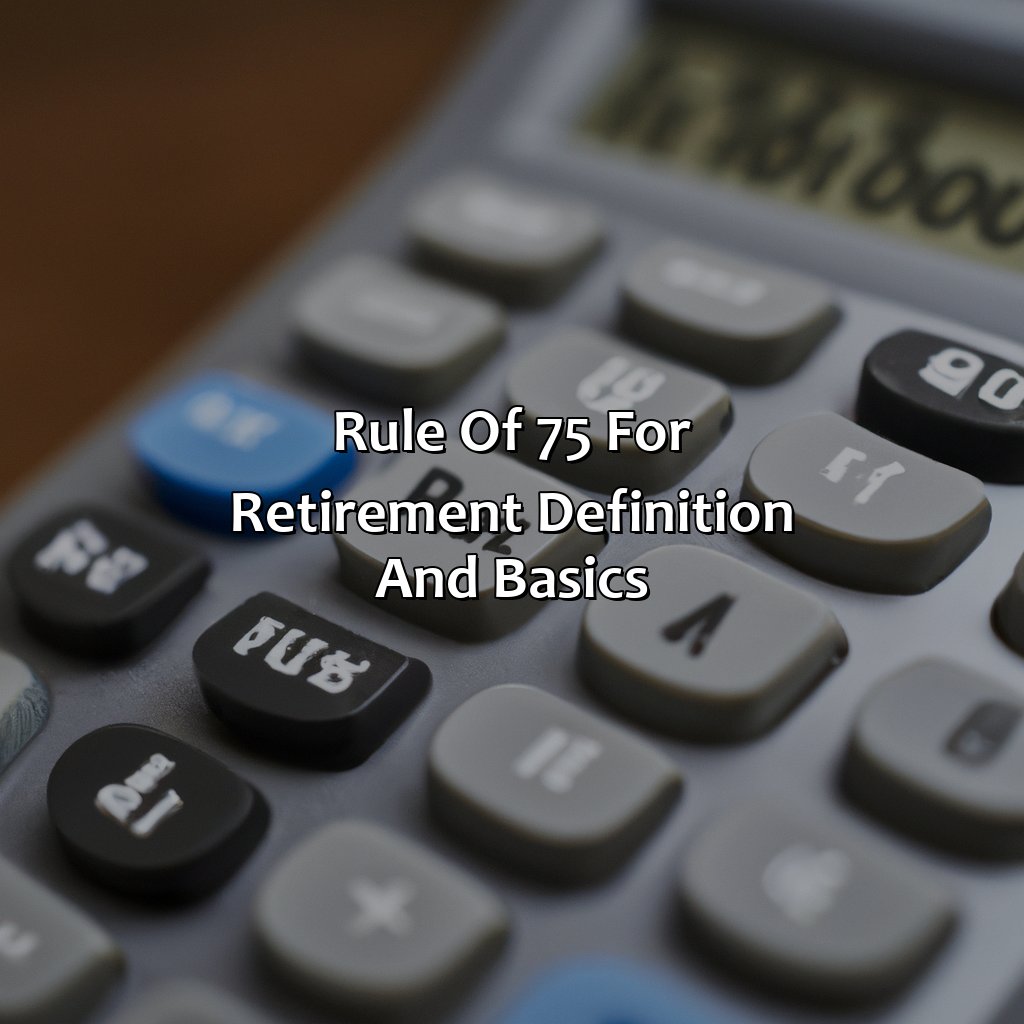
Image credits: retiregenz.com by Joel Washington
Calculation of the Rule of 75
In order to determine the Rule of 75 for retirement, the formula takes into account the sum of an individual’s age and years of service with an employer. Essentially, when the sum of these two figures reaches 75, it means the individual is eligible for retirement benefits. This formula can vary depending on the specific retirement plan, so it’s important to consult with your employer to understand how it applies to you.
For a clear understanding of the Rule of 75, the following table highlights the typical calculation for an individual with varying years of service:
| Years of Service | Age Required to Reach Rule of 75 |
|---|---|
| 10 | 65 |
| 20 | 55 |
| 30 | 45 |
| 40 | 35 |
It’s worth noting that while the Rule of 75 can serve as an important benchmark for retirement eligibility, individuals should build a retirement savings plan that exceeds the minimum requirements to ensure a comfortable retirement.
Considering the importance of retirement savings, take action to assess your eligibility for the Rule of 75 and set a savings plan accordingly. Don’t let the fear of missing out on retirement benefits tempt you to withhold contributions. Building a solid retirement plan is essential in securing your financial future.
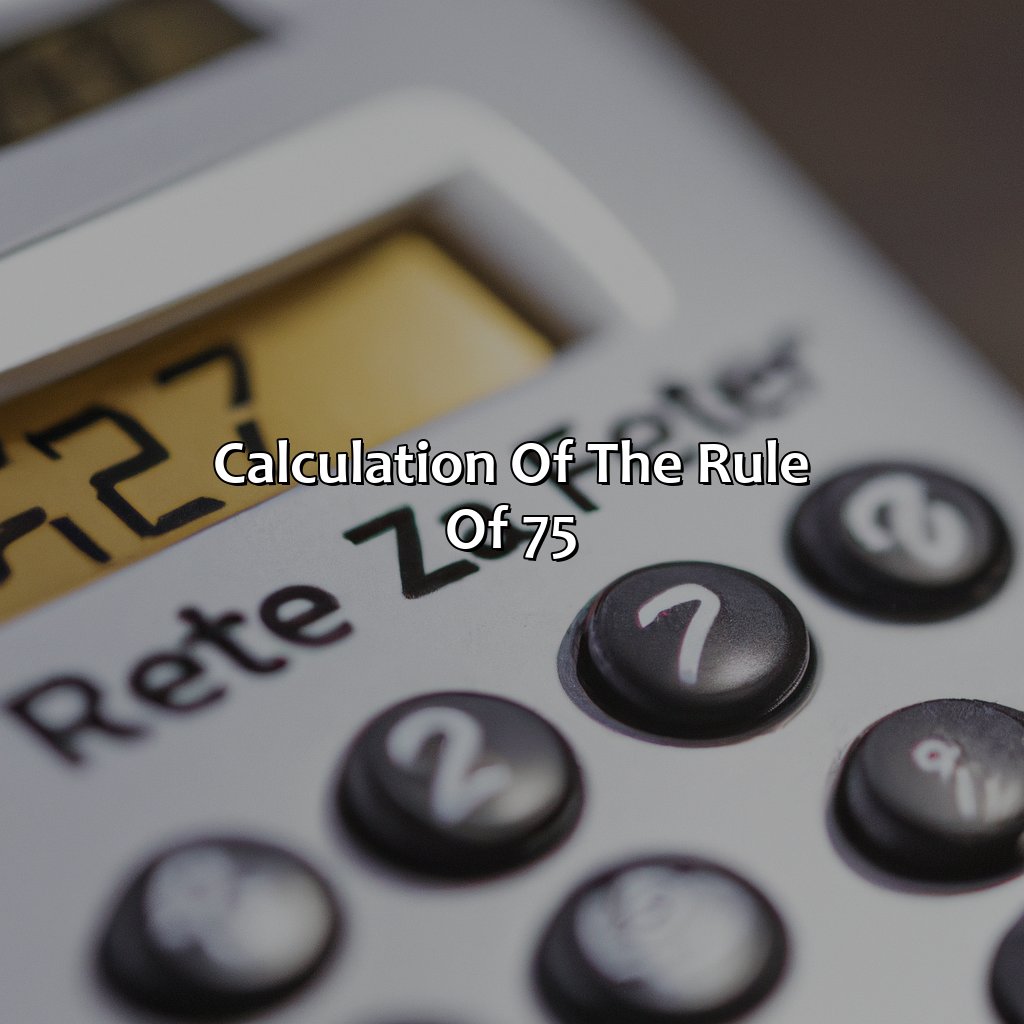
Image credits: retiregenz.com by Adam Jones
Advantages of the Rule of 75
The Rule of 75 is a retirement rule that determines when one can retire with full benefits. Here are the benefits of this rule:
- Early retirement: The Rule of 75 allows for early retirement without penalties for individuals who have worked for their companies for 30 years.
- Bigger retirement paycheck: Retirees who follow the Rule of 75 receive bigger retirement payments compared to those who retire earlier.
- Pension eligibility: This rule makes retirees eligible for pension payments without penalties.
- Health care benefits: Retirees who follow the Rule of 75 may qualify for continued healthcare benefits from their companies.
- Social Security benefits: Retirees who follow the Rule of 75 may receive Social Security benefits without penalties.
- Flexible retirement: This rule allows for a flexible retirement age for eligible individuals without penalties.
In addition to these benefits, it is important to note that the Rule of 75 is not always applicable to all companies. It is important to check with your employer or HR department for eligibility.
A true history regarding this retirement rule is that the Rule of 75 was implemented by the Internal Revenue Service (IRS) in 1986 as a way for employees to retire with full benefits after a certain amount of years of service. Since then, different variations of the rule have been implemented by different companies to suit their needs.
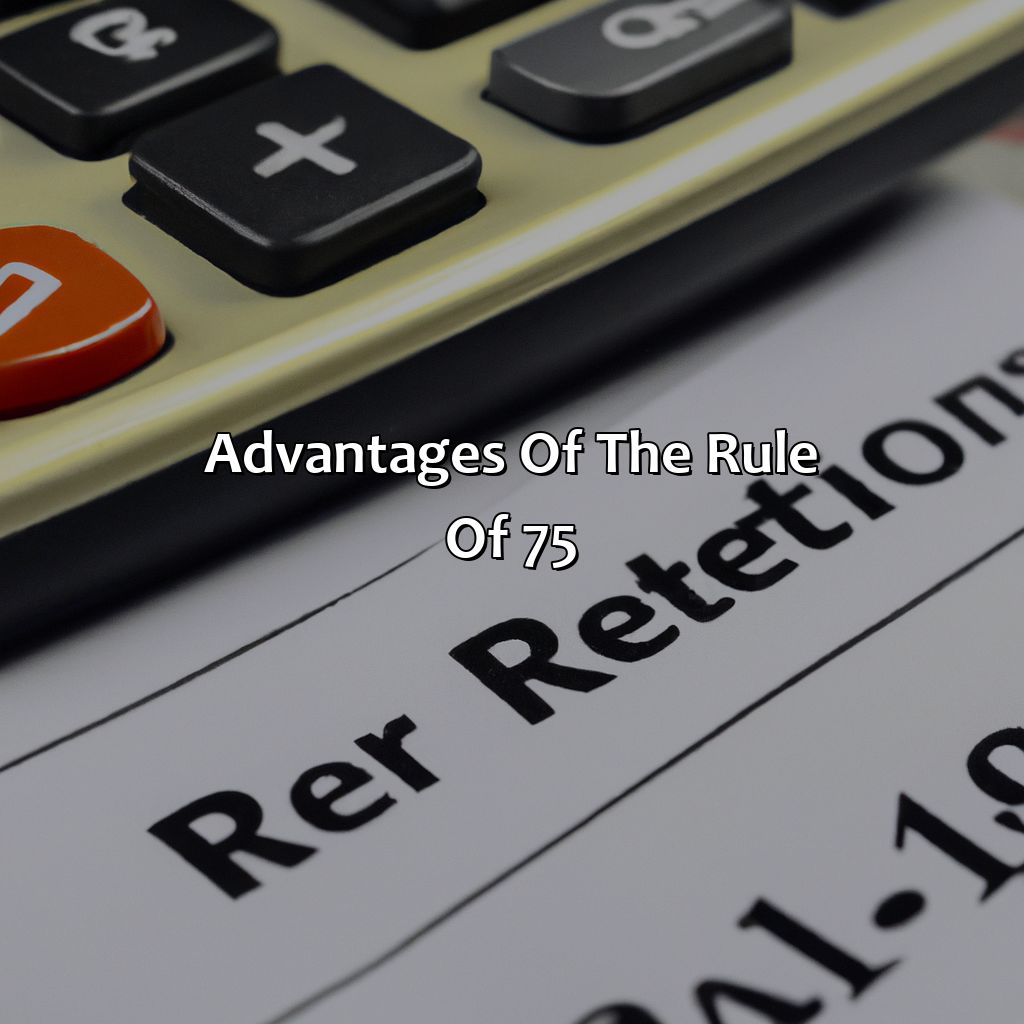
Image credits: retiregenz.com by David Arnold
Potential Disadvantages of the Rule of 75
The potential drawbacks of the Rule of 75 retirement planning technique can pose significant challenges.
The following are some potential drawbacks of the Rule of 75:
- It can lead to insufficient savings for retirement due to not accounting for inflation and unexpected expenses.
- It may not be suitable for those who need to retire earlier than age 75.
- It relies heavily on predicting future income and expenses, which can be unpredictable.
- It may not account for fluctuations in the market or unexpected changes to one’s financial situation.
- It assumes a certain level of stability in one’s income and expenses, which may not always be the case.
- It may not be tailored to the specific needs and goals of the individual, leading to suboptimal retirement planning.
It is worth noting that the Rule of 75 is not the only retirement planning strategy available. It is crucial to explore other options and consult professionals to choose a plan that aligns with one’s unique financial situation and goals.
A pro tip is to continuously reassess and adjust retirement plans as financial circumstances change over time.
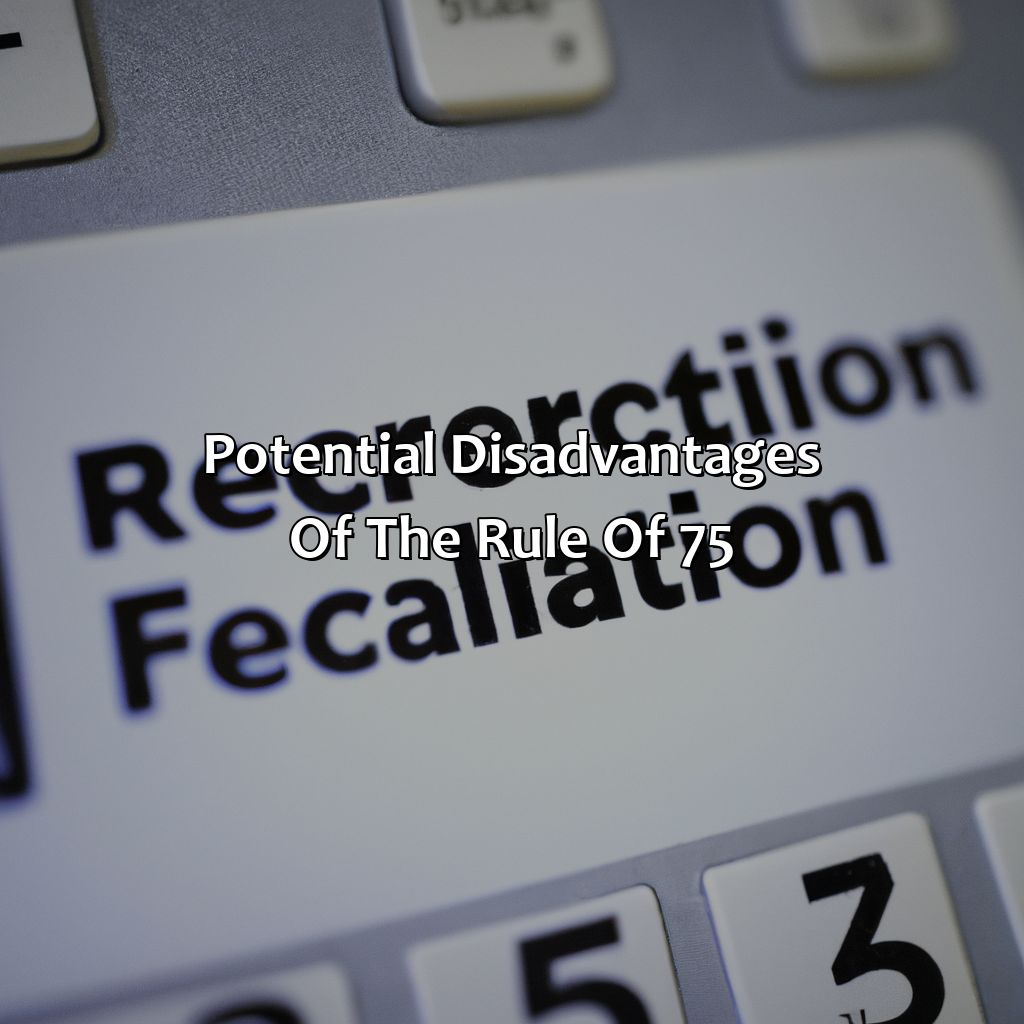
Image credits: retiregenz.com by Adam Arnold
Rule of 75 Variations and Exceptions
To better understand the variations and exceptions related to the Rule of 75 for retirement, we need to examine certain factors. Here are some important details you should be aware of:
| Factor | Variation/Exception |
|---|---|
| Age | Age of Retirement |
| Service Credit | Service Credit Eligibility |
| Benefit Plan | Benefit Plan Eligibility |
| Early Retirement | Early Retirement Qualification |
| Full Retirement | Full Retirement Qualification |
Pro Tip: It’s essential to consider all factors related to retirement before making a decision.
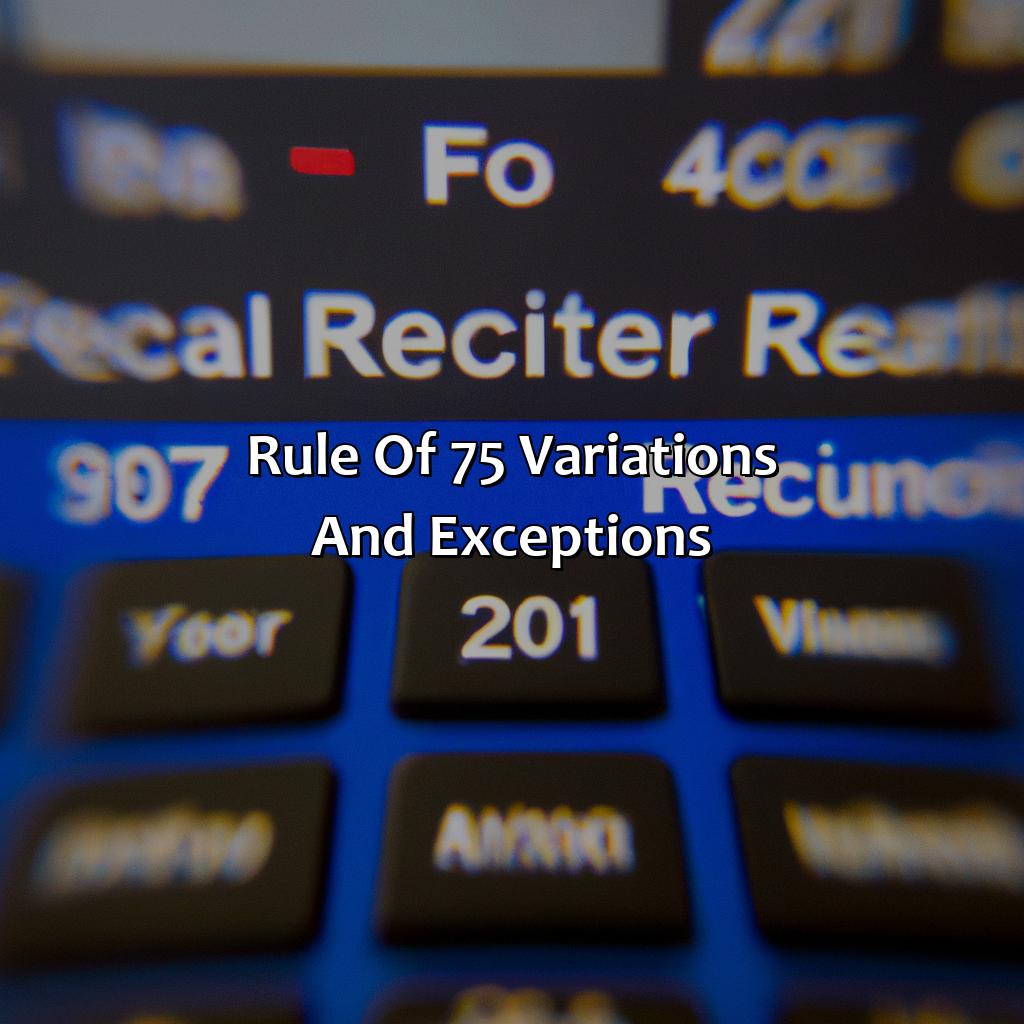
Image credits: retiregenz.com by James Duncun
Some Facts About Rule of 75 for Retirement:
The Rule of 75 is a retirement planning strategy that takes into account a person’s age and years of service. (Source: Investopedia)
Under the Rule of 75, if a person’s age and years of service add up to 75 or more, they may be able to retire with full benefits. (Source: The Nest)
The Rule of 75 is commonly used in pension plans, as well as Social Security retirement benefits. (Source: Retirement Benefits Guide)
Some retirement plans require a minimum age and years of service to qualify for full retirement benefits, which may differ from the Rule of 75. (Source: U.S. Office of Personnel Management)
The Rule of 75 can provide a sense of security and peace of mind for those who are planning for retirement. (Source: Money Q&A)
FAQs about What Is Rule Of 75 For Retirement?
What is rule of 75 for retirement?
The rule of 75 for retirement is a common term used in the retirement planning world. It refers to the combination of an employee’s age and years of service with a company, which should equal at least 75 for them to be able to retire and receive full benefits.
How is the rule of 75 calculated?
The rule of 75 for retirement is calculated by adding an employee’s age to their years of service with the company. For example, if an employee is 60 years old and has worked for the company for 15 years, their age (60) plus years of service (15) equals 75, making them eligible to retire with full benefits.
What if an employee has not yet reached the rule of 75?
If an employee has not yet reached the rule of 75, they may not be able to retire and receive full benefits. However, some companies have options such as early retirement or buyout programs that can provide them with additional retirement benefits.
Is the rule of 75 the same for every company?
No, the rule of 75 for retirement may differ from company to company. Some companies may have a rule of 80 or 85 instead, while others may have different requirements for retirement eligibility.
How does the rule of 75 affect retirement planning?
The rule of 75 can play a significant role in retirement planning, as it determines when an employee is eligible to retire and begin receiving benefits. Employees should take the rule of 75 into consideration when planning their retirement and ensure they have met the requirements for full benefits.
Can an employee retire before reaching the rule of 75?
Yes, an employee can retire before reaching the rule of 75, but they may not be eligible for full benefits. Retirement benefits may be reduced based on the employee’s age and years of service at the time of retirement.
 Checkout this IRS Loophole
Checkout this IRS Loophole 




